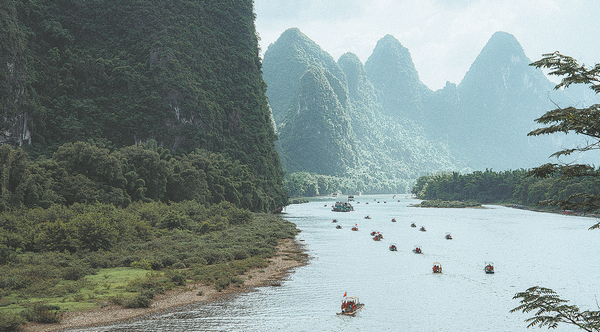For as long as I can remember, I have had a fascination with climbing mountains. Coming from Wales, home to (in my perhaps biased opinion) some of the most beautiful mountains and natural scenes in the world, I have been lucky enough to be able to feed this love of scaling lofty peaks as much as my heart desired. Though I can't pinpoint exactly where this fascination comes from, the reason may be as simple as the answer mountaineer George Mallory gave to the question why climb Qomolangma — known in the West as Mount Everest. His reply was, "Because it's there."
Luckily, Beijing has also proven to be a fertile ground for this hobby, with the Great Wall snaking its way through the imposing mountain ranges to the north of the city. But when it comes to mountains in China, there has only been one image that springs to mind — an iconic view, so much so that it features as an image on the 20 yuan ($2.8) note — these are the karst mountains of the Guangxi Zhuang autonomous region, part of the South China Karst, which was designated a UNESCO World Heritage Site in 2007.
After many years of living in China, I finally got the chance to visit these natural wonders while on a trip to Xingping ancient town. There is a lot that could be said about the area in general, from the renowned cormorant fisherman posing for photos on the banks of the Lijiang River as countless tourists float by on bamboo rafts to the many ancient towns and villages dotted throughout the region such as Yangshuo and Xingping (a town that was visited by former US president Bill Clinton, who desired to see "the real China") offering enough unique local history and culture to warrant the trip alone.

A view of the Lijiang River and karst mountains from Xingping town, Guangxi Zhuang autonomous region. MICHAEL RHYS CARD/CHINA DAILY
But the real stars of the show, and the main reason I visited the area, were undoubtedly the frankly staggering amount of karst mountains, their millennia-long formation arising from soluble rocks that were broken down over time by certain acids, forming sinkholes and caverns, such as the Reed Flute Cave in Guilin, and eventually eroding into the topography that is visible throughout the region today.
I thought I knew what to expect upon arrival but photos and banknotes do not do these natural wonders justice. No matter where you go or where you look, these jagged green-topped monoliths pierce the skyline in all directions as far as the eye can see.
The abundant beauty and awe-inspiring views of the region even outweigh the stifling heat and humidity that usually keep me hidden away indoors under an air conditioner.
Whether hiking, relaxing on a boat cruise down the river or simply enjoying the local area, the combination of karst mountains, ancient towns, meandering rivers and lush vegetation creates one of the most captivating natural landscapes I have had the privilege of witnessing and will be one I surely return to in the future.
Editor Ⅰ: Zhang Wenwen
Editor Ⅱ: Wu Dan
Editor Ⅲ: Liu Guosong














